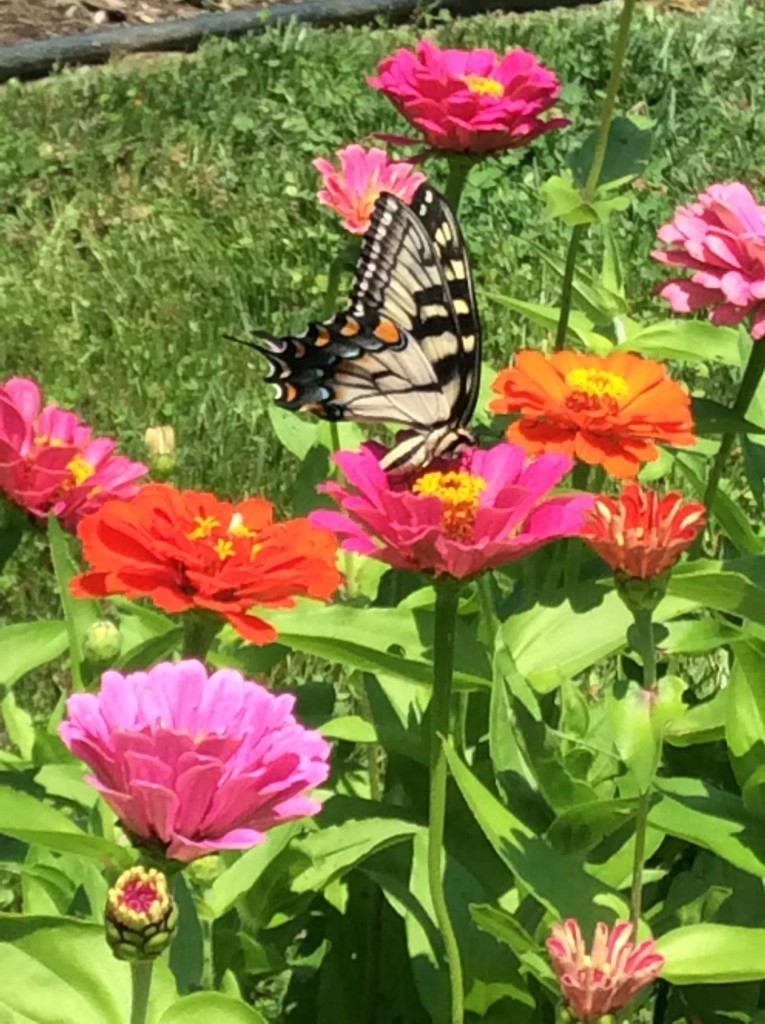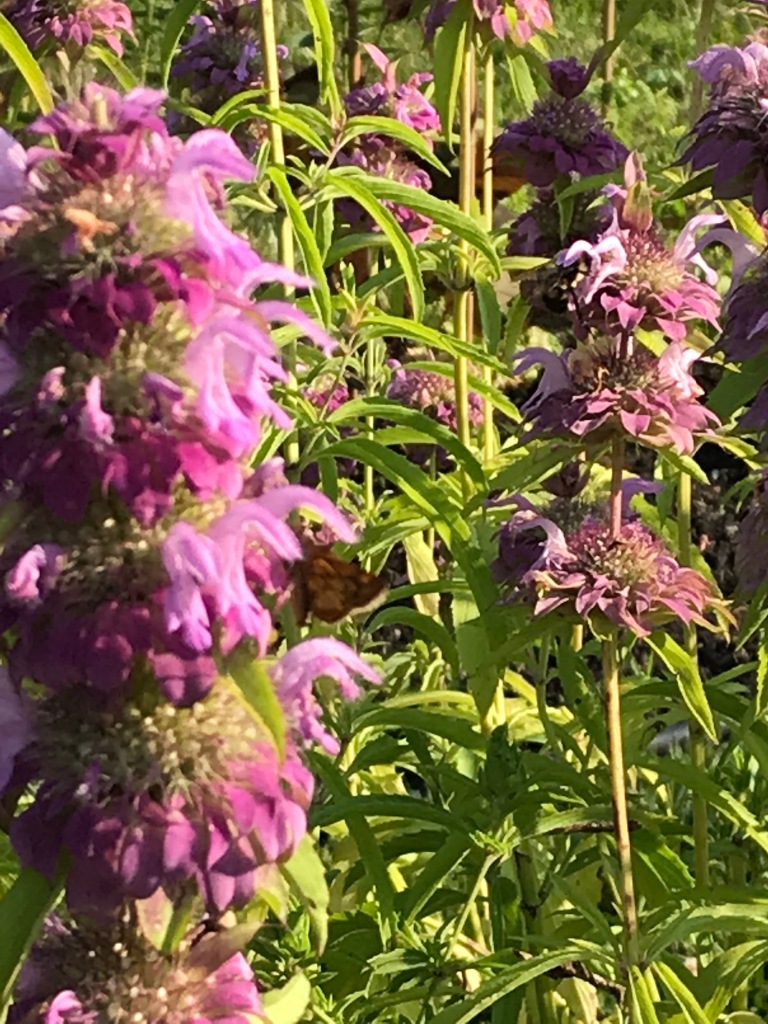
- Milkweed (Asclepias)
- Perennial host plant
- Seed source is AS02 Milkweed Seed Collection: a collection of various Milkweed seeds – Showy milkweed (Asclepias speciosa), Common milkweed (Asclepias syriaca), Pink Swamp milkweed (Asclepia incarnata), Butterfly weed (Asclepias tuberosa) , Autumn Blaze milkweed (Asclepias mixture), Bloodflower (Asclepias curassavica)
- Stratification – A period of cold is required to increase seed germination from 5% to 90%. Place seeds in damp paper towel and seal in a baggie for 4 – 6 weeks in the refrigerator. Make sure the paper towel stays slightly damp and does not get moldy. Over the years we’ve had great success with stratifying the seeds in small jars filled with moist sand and kept refrigerated for 4 -6 weeks. There is no need to check for mold using sand and the seeds remain viable longer!
- Planting – Sow outdoors, after stratification, after the last frost of spring (see ‘What are my Frost dates’ below). Or, sow seeds indoors, after stratification, in peat pots 6- 8 weeks prior to the last spring frost, at a depth of 1/8 inch. Germination requires light and takes anywhere between 14 to 28 days. Milkweed grows best with at least 6 hours of sunlight in good draining soil. Plant milkweed 12 to 18 inches apart in groups of 4 or more to attract Monarchs and other pollinators.
- Growth – Plants will reach between 12 inches to 36 inches.

- Mexican Torch Sunflower (Tithonia rotundifolia)
- Annual nectar plant
- Seed source is this year’s seed saved from the garden. This flower is the Monarchs favorite for nectar!
- Planting – Sow seed directly into the garden as this sunflower does not transplant well. Plant 1 inch deep and 9 – 12 inches apart after all danger of frost has passed (see ‘What are my Frost dates’ below). I found that these flowers grow best when the outside temperatures were consistently warm. Requires full sun.
- Growth – Large plants grow up to 5 feet with masses of beautiful 2 – 3 inch reddish orange blooms over a long season. Does does not require support and grows well in average soil.

- Giant Zinnia Mix (Zinnia elegans)
- Annual nectar plant also loved by Monarchs
- Seed source, originally from Circa Plants and an heirloom variety started in the 1800’s, is this year’s seed saved from the garden.
- Planting – Sow seeds 1/4 inch deep after all danger of frost has passed (see ‘What are my Frost dates’ below). Requires at least 6 hours of full sun per day.
- Growth – These plants can reach up to 3 feet tall and produce 4 – 6 inch mixed color blooms containing a ring of pollen which attracts all types of butterflies and bees.

- Lambada Bee Balm (Monarda hybrida)
- Annual nectar plant loved by butterflies, hummingbirds, and bees.
- This year’s saved seed is a member of the bee balm family, has beautiful unique, lovely lavender-pink flower clusters, and blooms for an extended period of time adding new flower nodes as it grows.
- Planting – Lambada is easy to start from seed and can be planted fall, winter and/or early spring. Start outdoors by planting directly into the garden, cover with 1/4 inch soil, and gently firm down with your hand. Water the seeds in well and keep moist until seeds sprout in 7 – 14 days. If starting in fall or winter, seedlings require a floating row cover to survive cold temperatures.
- Growth – Is a hardy annual, which means it thrives under cooler temperatures, and could grow as a perennial in zone 7 and higher. Plants requires 6 – 8 hours of sunlight, grows 24 – 36 inches tall so best to be supported by netting, are tolerant of dry soil conditions, and are deer resistant .

- Pincushion Mix (Scabiosa atropurpurea)
- Annual nectar-producing plant is loved by all types of butterflies and bees.
- Seed source is this year’s saved seed from the garden.
- This is another hardy annual plant that thrives under cooler temperatures and could grow as a perennial in zone 7 or higher. Pincushion flowers bloom in the early Spring.
- Planting – Sow seeds indoors by placing seed firmly on the surface and covering with 1/4 inch soil. Requires darkness and soil temperature of 65 – 70 degrees to germinate well. Keep soil moist until sprouted, which takes from 6 – 8 weeks. To sow outdoors, plant seed 1/4 inch after all danger of frost has passed.
- Growth – Space plants 9 inches apart and provide flower netting support for the blooms that will reach 24 – 36 inches tall. Deadheading is a must to keep these flowers blooming!
What are my Frost dates? This Farmers Almanac link will provide the last Spring frost date and first Fall frost date based upon the location of your garden or yard.
Browse Frost Date Locations by State or Province
Really like your site and has a wealth of information
LikeLike